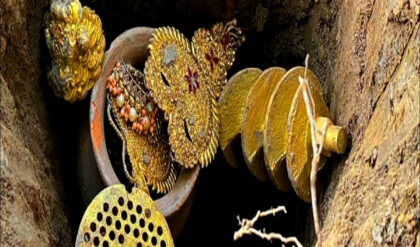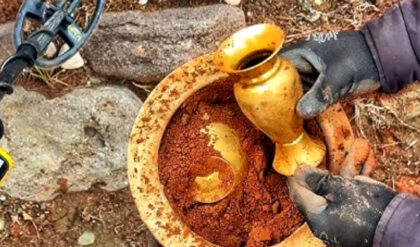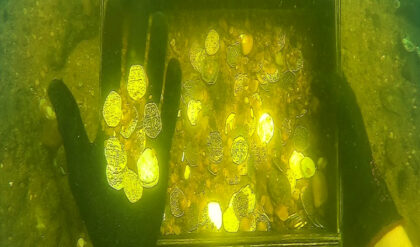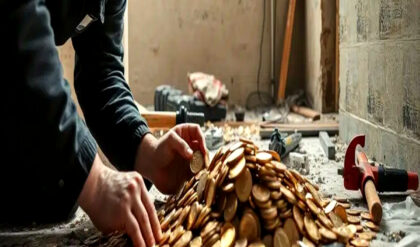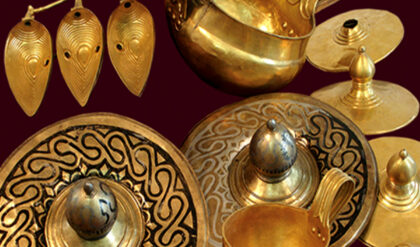Historical treasures like miner’s pants that could have been made by Levi Strauss, mysterious daguerreotypes and gold jewelry from the U.S.S. Central America – a ship laden with gold that sunk in 1857 – went on display for the first time.
The ‘accidental time capsule’ from the Gold Rush Era sidewheel steamship was recovered by a rogue captain and a salvage company between the 1980s and 2014. Many of the treasures, however, have been hidden away due to years of litigation with insurance companies over who held rightful claim.
Dubbed the ‘Ship of Gold,’ an estimated value of the gold alone is $100-$150 million.
The 280-foot ship was traveling from Panama to New York by way of Havana, Cuba carrying nine tons of gold.

The ‘Ship of Gold’ the U.S.S. Central America went down with nine tons of gold and 425 passengers in 1857

The ‘Mona Lisa of the Deep’ daguerreotype recovered from the wreck of the U.S.S. Central America was on display in Reno, Nevada
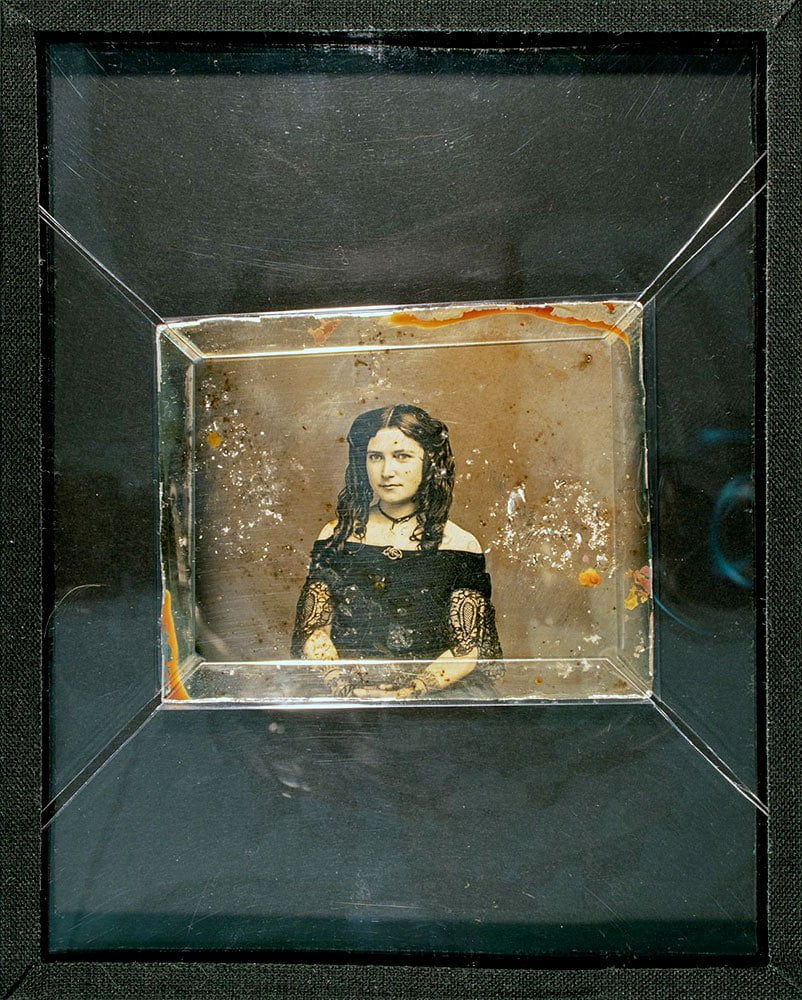
Several daguerreotypes were found on the ship. Daguerreotypes are photographs taken by an early photographic process employing an iodine-sensitized silvered plate and mercury vapor

A pair of work pants, possibly an early rendition of jeans made by Levi Strauss were hidden underwater for over a hundred years until their discovery in 1988

A pair of miner’s pants, button fly with riveted pockets, could have been among the first jeans fashioned by Levi Strauss

The U.S.S. Panama was laden with nine tons of gold which sunk in the Atlantic off the coast of South Carolina during a hurricane in September 1857
The ship also carried 578 passengers and crew, 425 of which perished in the Sept. 12, 1857 wreck off the cost of South Carolina in a Category 2 hurricane. Only 153 passengers, mostly women and children, survived.
Their belongings create a rare historic picture of American life just before the Civil War.
These rare historical items were on display for the first time last week since their discovery at the National Antique Bottle Convention in Reno.
‘The S.S. Central America site is an accidental time capsule, and as such, it is a perfect glimpse into the time of these people,’ Bob Evans, chief scientist and historian for the U.S.S. Central America collection, told the Reno Gazette Journal.
This gold brick salvaged from the wreckage of the U.S.S. Central America is worth more than a $1 million alone
Fred Holabird, left, and Bob Evans, right, pose for a portrait with artifacts found on the ship
Gold ingots, some of the first gold currency out of the Gold Rush were recovered from the wreckage
Gold and silver coins lay on the sea floor off the coast of South Carolina until their discovery in 1988
Hundreds of historic artifacts from the the U.SS. Central America were on display in Reno. They created an accidental time capsule of Gold Rush Era America
‘There were people from all over the country who had traveled to California and now we’re going home with their wealth,’ he told the paper.
A pair of canvas sailcloth pants with a button fly, which were found in a trunk that once belonged to Lieutenant Dement, a veteran of the Mexican American War and passenger on the ship.
Evans said that the pants could have been the original work of Levi Strauss, who went to San Francisco in 1853 to make his fortune in the Gold Rush. He didn’t paten his button-fly jeans until 1873, but they took off to become America’s most iconic brand of jeans. The pants found in the shipwreck, have the same riveted pockets that are still found on Levi’s today.
425 people died in the shipwreck. Only 153 passengers, mostly women and children survived. In addition to the huge loss of life, the loss of $8 million worth of gold contributed to the financial Panic of 1857
Strauss himself had a shipment of gold being carried on the Central America.
A Brooks Brothers smoking jacket and undershirt were also found in the wreckage.
Several daguerreotype photographs were also on display at the convention, including the ‘Mona Lisa of the Deep’ a woman with an off-the-shoulder lace dress and corkscrew curls. The mystery woman, who has not been identified, flashes a wry smile, giving her her nickname.
Daguerreotypes, an early form of photo processing, were created using an iodine-sensitized silvered plate and mercury vapor.
The exhibit also boasted glass bottles for whiskey and wine, some still bound in their protective wicker cozies. The wine room key, along with its brass tag, were found in a safe. A holster for a large pistol, brass powder flasks, a powder horn and other firearm paraphernalia that were found on the wreck were also on display.
The sinking of the U.S.S. Central America was considered a great human and financial tragedy at the time.
The gold was worth $8 million at the time and its loss contributed to the financial Panic of 1857, which crippled the American economy.
The artifacts in the exhibit were kept in storage in three different states: Maryland, Massachusetts, and Ohio, until a court-approved settlement was reached ending a decades-long ownership dispute, according to the Associated Press.
When it was discovered in 1988 by a salvage team lead by Capt. Tommy Thompson, it was called ‘America’s greatest treasure,’ however greed, intrigue and legal wrangling marred the find.
A group of Ohio investors who paid $12 million to fund the expedition said that they were cheated out of the returns and workers on the salvage ship, who were forced to sign a confidentiality agreement to keep the project secret, said they were stiffed as well.
